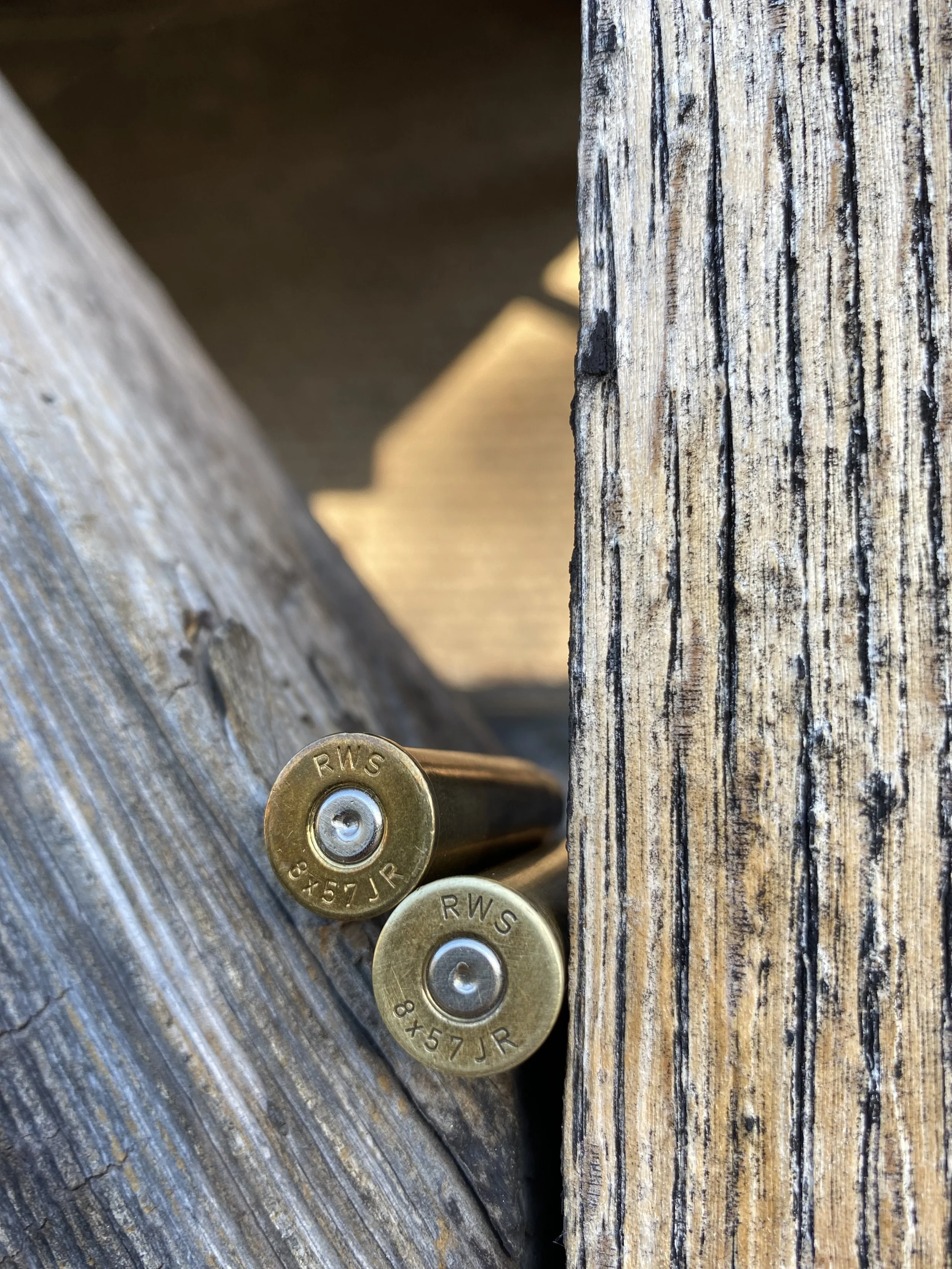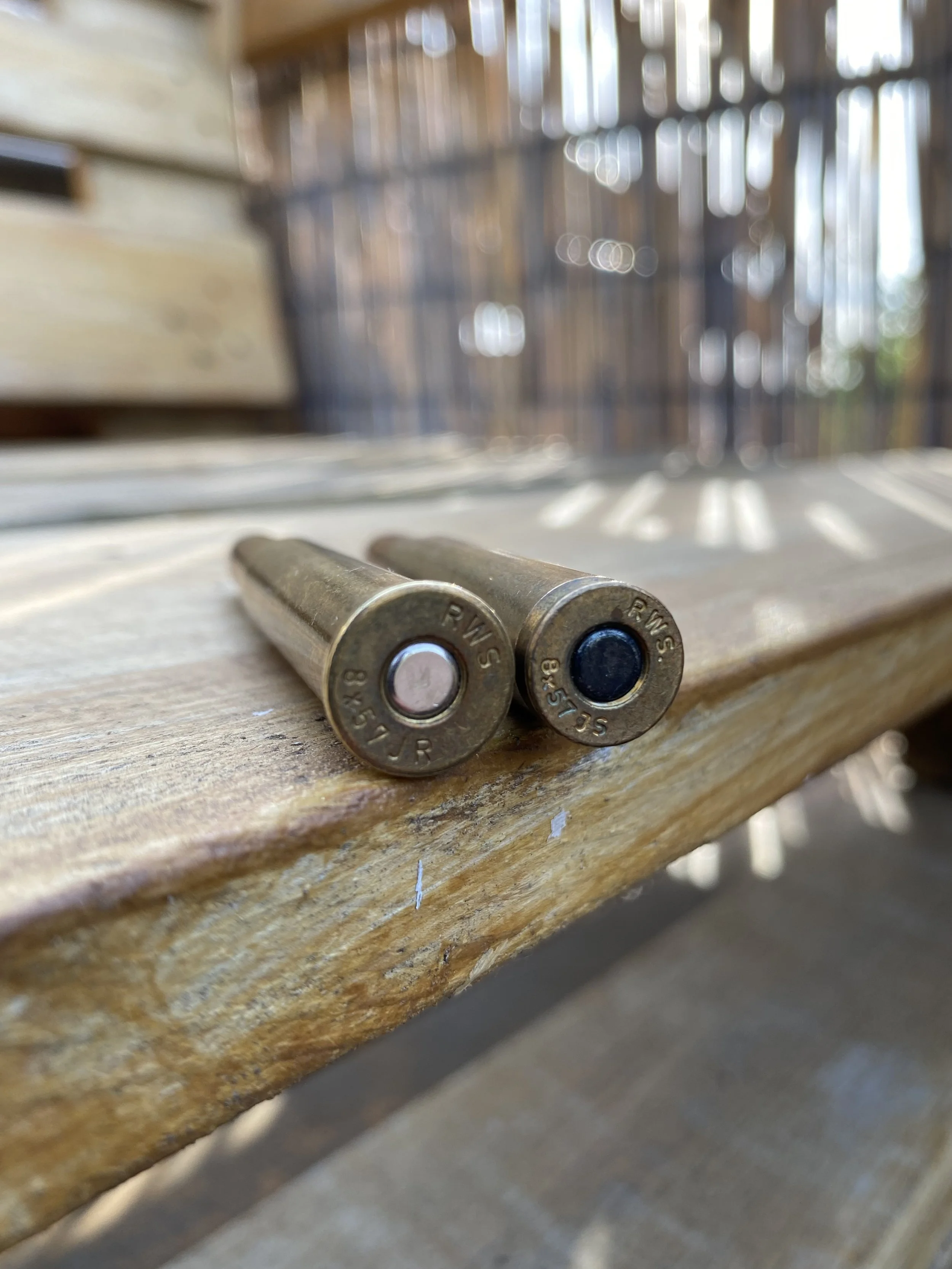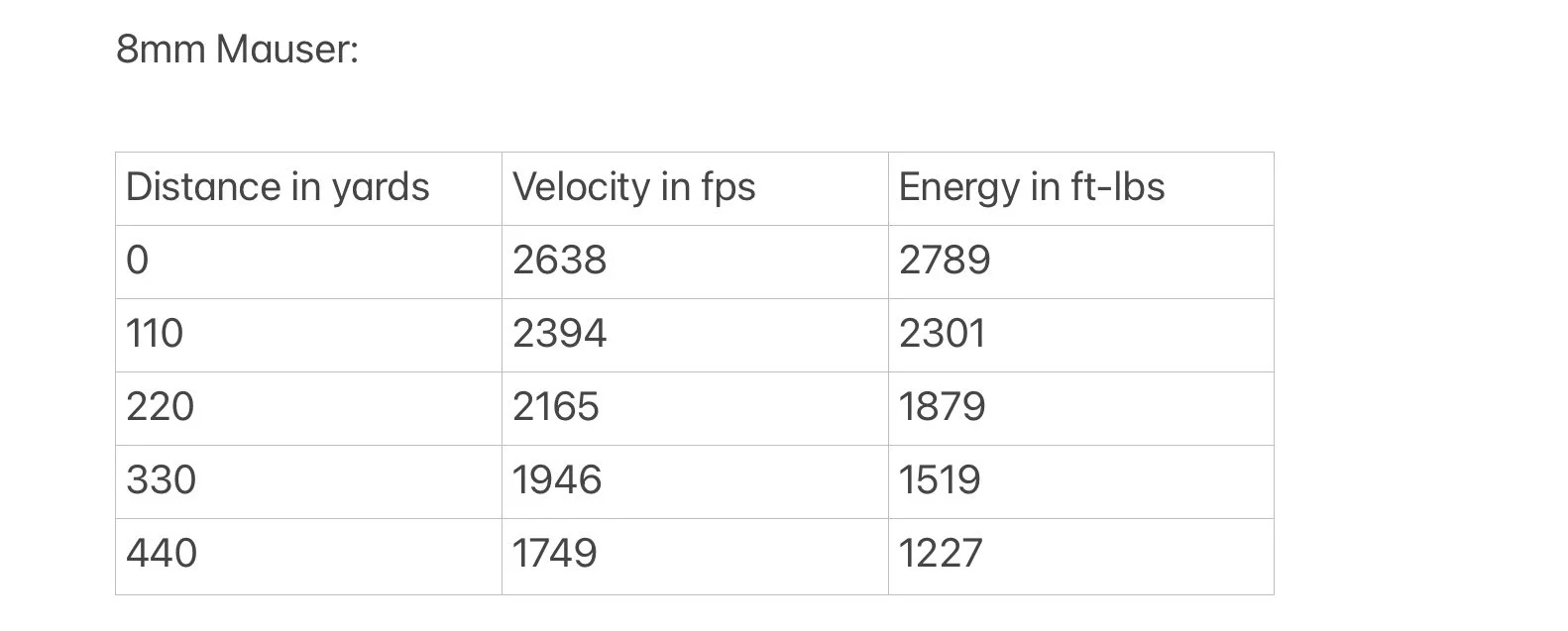The .30-06 Springfield’s European Counterpart
If the average American hunter heads out for a big game hunt, chances are he’s relying on the .30-06 Springfield to get some meat on the ground. Why? Well, because the ought-six has proven time and time again that it gets the job done -- reliably and repeatedly.
If his European counterpart picks his do-it-all rifle, he’ll choose the 8mm Mauser rifle every time. The .30-06 and 8mm Mauser share a lot of similarities. The 8mm proved its value in two world wars and on the hunting fields. On 30-pound roe deer and 800-pound moose. Close shots in thick woods or relatively long poke in the mountains. It has done it all, and successfully so.
The 8mm Mauser hits hard enough to bring down the biggest animals short of dangerous game. But without punishing the shooter’s shoulder. Like the .30-06, it might not be the best for everything. But without a doubt, it’s damn good at what you want it to do.
The 8mm Mauser‘s history began in 1887. The German military realized it needed a new cartridge to replace the outdated black powder 11x60R Mauser as the primary service cartridge. Black powder could only produce so much speed with any given bullet. So big, heavy projectiles were the way to go for lots of kinetic energy. France had its 8x50R Lebel since 1886, using smaller diameter bullets. They were propelled to astonishingly high velocities by the first successful smokeless powder. The Austro-Hungarian Empire also used these new nitrocellulose powders for their 8x50R Mannlicher. The “little” 8mm bullets were a hot property. Aerodynamically superior. Roughly analogous to 6.5mm bullets today. The higher velocities compensated wonderfully for lighter bullets, delivering flatter trajectories without sacrificing downrange energy. Remember, kinetic energy depends on velocity much more than on weight.
In 1888, the new Patrone M/88 hit the scene. This new cartridge was intended for use in the Gewehr 88, the new standard military rifle of the German Empire. This first version (you’ll learn about the various versions of this cartridge later) of this 8x57mm cartridge shot 227-grain round-nose bullets with a .318 inch diameter. The bores of the service rifles had a .311 inch land diameter and .319 inch groove diameter. This proved to be less than ideal for accuracy and barrel life. The groove diameter was later increased to .323 inches, which resulted in the better overall performance of the long and heavy projectiles.
In 1898 Paul Mauser built a new service rifle, the famous Gewehr 98. At first it was chambered for the same M/88 cartridge. But in the never-ending quest for better ballistic performance, the cartridge underwent some modifications. The bullets were changed to 153-grain spitzer bullets with a slightly larger diameter of .323 inches. The bores used for the new version of the 8x57mm were labeled “S-bores” to distinguish them from the old ones. These changes resulted in the two versions not being interchangeable.
In 1905, the German military fully adopted this new 8mm Mauser, labeling it the 8x57 IS. That stands for Infanterie Spitz (infantry spitz), or Infanterie Stark (infantry strong), depending on who you ask. Either way, the S indicates the wider .323-inch bullet diameter of the S-bore version.
The more aerodynamic bullet shape combined with enhanced muzzle velocities (and higher chamber pressure) yielded improved maximum effective range. Some of the older 98 Mausers were adapted to handle the new 8x57 IS, but the Patrone M/88 slowly vanished from the scene. For many years, however, it shared German hunting fields with the newer 8x57 IS, so shooters had to be careful to load the correct ammunition.
Regarding day-to-day jargon, the old cartridge is also called the 8x57 I. The letter I in German script or type face was often mistaken for a J; the cartridges were also named the 8x57 J or 8x57 JS. The critical thing to remember is that the JS or IS designated cartridges should not be fired in older rifles with the narrower bores.
The dimensions of the 1905 update (8x57 JS) are more or less the cartridge’s configuration today. As mentioned, the 8x57mm was used as a hunting round, so hunters quickly discovered its advantages. Shot with the .323” bullets, the heaviest game animals of Central Europe went down for the count. But, since break-action guns (combination guns, single shot break actions, or doubles) outnumbered bolt action guns by far, rimless versions of the 8x57JS were initially most common. Those cartridges carry an R for Rand (rimmed) in their name. This increases the 8x57 confusion even more. There are four different types: 8x57J R with the .318” bullets and rims. 8x57J rimless with .318 bullets, 8x57JS R with the rim, and 8x57JS rimless.
Most Europeans, especially Germans, are used to these differences and grew up looking at them as distinct cartridges. In America, though, the term 8mm Mauser references all of them, although less often the rimmed versions, since those are rare in the USA. By the way, virtually no one calls them the “8mm Mauser” over here. That name stuck with the cartridge due to the tight-knitted connection between the cartridge and Peter Paul Mauser‘s Gewehr 98 rifle . But he had nothing to do with the cartridge’s development. Many other names exist, like the 7.92x57mm, 7.92mm, 7.92 Mauser, or the 8x57 Mauser. You’re forgiven if confused!
Now, let’s take a closer look at the variants to clarify the differences.
The Patrone M/88 cartridge is identical to the 8x57 I. This was the first cartridge of this group, developed in 1888. In its military duties, it launches bullets with a .318 inch diameter of a 227-grain round-nose bullet. It was not used in one of the world wars, as it was replaced in 1905 in Gewehr 98 service rifles. This “8x57” is rarely used for hunting anymore. It operated at fairly low pressure, and the old rifles should only be fired with the correct ammunition. Otherwise, disaster might strike.
The 8x57 IR remains fairly popular in break-action guns, mainly old drillings. It fires the same .318-inch diameter bullets. A few factory loads for this cartridge are still manufactured, generally with simple cup/core bullets. They’ll cleanly take all Central European game species at ranges to maybe 150 yards. A handful of other bullets, even lead-free choices, are available for the handloader to play with. A typical load will push a 196-grain round-nose lead core bullet to 2,329 fps for 2,360 ft-lbs at the muzzle. At 100m (110 yards), it offers just enough energy to be legal for big game hunting in Germany. The threshold is 1,475 ft-lbs (2000 Joule) at 100m, and the old 8x57IR retains 1,664 ft-lbs (2257 Joule). For your everyday woods hunt for deer, this 130-year-old 8x57 is still enough.
The post-1905 8x57 IS, with its .323 inch diameter bullets, is the one that compares so well to the .30-06 Springfield. For decades it has been the go-to cartridge for many hunters. All the big ammo manufacturers load for it, and all new European rifles are chambered for it. Factory loads usually start at 139-grain bullets, with some match bullets as light as 123 grain. The upper end in factory loads is 220 grains, a Sierra GameKing load from Sellier & Bellot. Bullets in the 150-200 grains range, especially 196-grain projectiles, are most common. Pick your favorite cup and core construction or premium monolithic copper constructions like Barnes TTSX bullets. Some bullets and powders are specifically designed to work in short-barreled rifles with suppressors. The selection is not as wide as the number of .30-06 loads, but still wide enough. These loads are usually meant when American riflemen talk about “full power loads” compared to the conservative loads American companies sell to prevent injuries if a shooter confuses the different types. These should not be fired from the old guns with the narrower bores, as pressures are likely to exceed the metals’ capabilities. I will compare this 8mm Mauser version to the .30-06 Springfield a bit later, as this is “the” 8x57mm cartridge for most Americans.
Finally, let’s highlight the 8x57 IRS (infantry rimmed spitz). Modern drillings and double rifles chambered in this are a pleasure to hunt with. Expect ballistic performance just a touch less than that of the rimless version, since German rimmed ammo is generally loaded a bit lighter. You’ll find fewer factory loads in the R but still enough to equip yourself with a fitting bullet for any type of hunt. Combine the 8x57 IRS with a smaller riflebarrel and a shotgun barrel in a drilling (three barrel gun) and nothing will catch you off guard in the woods. You have the answer for everything from hares to grouse to moose.
Here are two of the old .318 diameter 8x57, one rimmed, the other rimless. Both are ballistically inferior to the newer 8x57 JS versions.
The most important question is how the 8mm Mauser stacks up against one of its fiercest competitors in the “all-purpose cartridge” department. For over a century, the .30-06 Springfield has been the benchmark. Even in the 8x57 IS homeland, the ought-six surpasses it as the most common cartridge. But that doesn’t mean it can’t hang with it, performance-wise.
Please remember that we’re dealing with two different diameters for this comparison. That means picking the closest available bullet weights for the two pills might not do one or the other justice. I picked a 180-grain lead-free tipped eXergy blue bullet from Sellier & Bellot factory loads for my comparison to keep the bullet weight comparable. But a 196-grain bullet would be way more typical in the 8mm Mauser, so going lighter will inevitably shorthand the German pill a bit in the form factor category, resulting in more speed and energy loss the longer the range is. The .323 inch bullet has a B.C. of .401 (G1), while the .308 diameter projectile has a .442 G1 BC. So keep that in mind when you look at the table below. The comparison gives you a general idea of how they stack up against each other. Handloads will shake up the picture even more.
There is no practical difference. The .30-06 has a slight advantage in speed and retained energy, translating into less drop. The 8mm, on the other hand, has a bit more frontal surface, which some believe to mean more knockdown power and instant kills. I can’t think of a hunting scenario where you’d be successful with one but not the other. The higher velocities of the .30-06 are not surprising considering the slightly larger case volume of 68 grains of water compared to 63 grains for the Mauser cartridge. But you can also look at it this way: the .30-06 utilizes 7.9% more powder room for 1.25% more muzzle energy in these specific loads. The difference in maximum chamber pressures paints a similar picture, as the American cartridge can be loaded to higher pressures than the 8mm Mauser. The 8x57mm certainly deserves to be labeled as “efficient.”
The Mauser recoils slightly less than the Springfield, but who will notice if the butt stock hits with 18, 19, or 20 ft-lbs of free recoil energy? For the most part, a well designed and fitted stock is the defining factor in felt recoil between these two.
I did not look at performance beyond 440 yards since, despite what you hear, most game is still taken under 200, maybe 300 yards. Most hunters would probably choose other cartridges for long-range hunting or shooting anyway. That doesn’t mean you can’t reach targets further away, but most people are not likely to select the 8x57 for that.
I like the 8mm Mauser because it’s not a .323 magnum cartridge. American designs of this diameter like the .325 WSM or the 8mm Remington Magnum give much higher velocities. They’re great as dedicated cartridges for heavy game like elk or moose in wide-open country or mountain ranges. But they also produce heavy recoil. Too much for many shooters and more than necessary for most situations. The German 8mm is very manageable and fits the bill perfectly as a do-all cartridge.
Like the .308 Winchester, the 8x57 IS does well in short barrels. It is an excellent choice if you intend to use a suppressor on your rifle. German ammo manufacturer RWS even offers a load specifically designed to reduce speed loss in barrels as short as 18 inches. Pair a suppressor with an 18- to 20-inch barrels and total length should reach 24 to 26 inches. The .30-06, on the other hand, works best with barrels not shorter than 22 inches; I prefer a 24-inch for the ought-six. That’s less than ideal for the additional length of suppressors.
For the most part, my own experience with the 8x57mm stems from the 8x57 IR. My father inherited an old drilling from my grandfather, and my brothers and I used the gun regularly when we were young. The .318-inch cup and core bullets were enough for wild boar and deer. Even red deer in Scotland’s wide-open moors had no chance; we just had to get close. The mild shooting drilling was perfect for the skinny frames of my brothers and me. To this day, the gun is in regular use.
I also own a sporterized 8x57 IS Gewehr 98 built in 1937. The gun was produced for the Portuguese army and thus did not see any war action in WWII. The barrel is in good condition and, 85 years after manufacture, still offers good accuracy. You can find tons of additional equipment for these rifles, even scope mounts that use the rear sight as a base. You can mount a scope without needing to drill and tap the receiver. Guns like this are often used by beaters in driven hunts or for blood tracking jobs, as you can literally drag them through brush and mud without fear of malfunction. M98 Mausers are hell for stout and famous for durability.
Many of the world’s hunting cartridges have a bigger “it” factor than the old 8x57, but few can match its track record and well-earned reputation. Try one and you’ll soon know what I mean.









